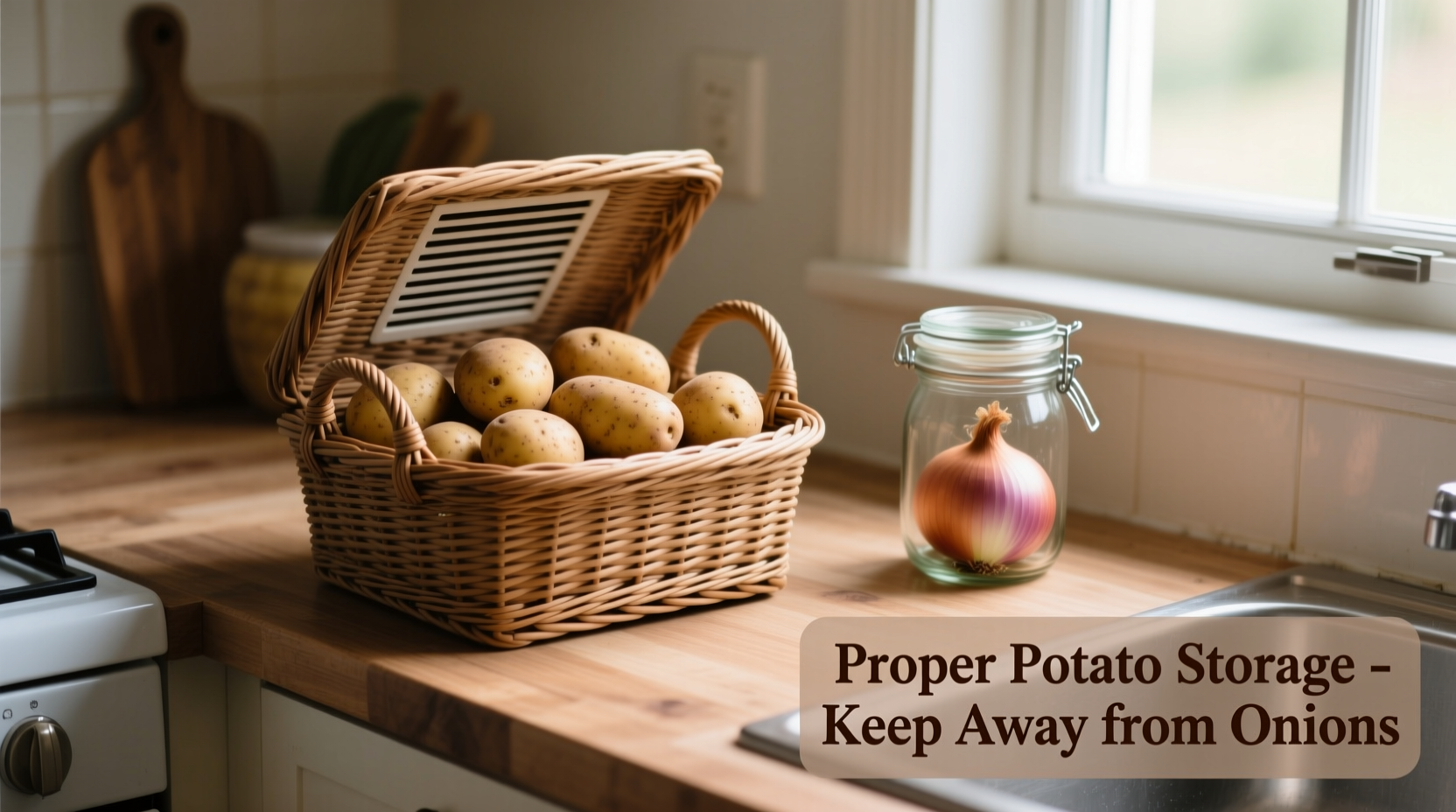Storing potatoes and onions correctly extends their shelf life significantly while maintaining flavor and texture. Most households throw away 20-30% of these staples due to improper storage methods. The key difference? Potatoes need dark, cool (but not cold) conditions with moderate humidity, while onions require cool, dry, and well-ventilated spaces. Never store them together—onions release gases that accelerate potato sprouting.
The Science Behind Vegetable Storage
Understanding respiration rates and ethylene production explains why storage conditions matter. Potatoes and onions continue metabolic processes after harvest, consuming their starch reserves. The USDA Agricultural Research Service confirms that proper storage slows this process, preserving quality. Temperature, humidity, and air circulation directly impact how quickly these vegetables deteriorate.
| Vegetable | Optimal Temperature | Relative Humidity | Expected Shelf Life | Air Circulation Needs |
|---|---|---|---|---|
| Potatoes (unwashed) | 45-50°F (7-10°C) | 90-95% | 2-3 months | Moderate |
| Onions (cured) | 32-45°F (0-7°C) | 65-70% | 1-2 months | High |
Source: USDA Agricultural Research Service Postharvest Technology
Potato Storage: Avoiding Common Mistakes
Refrigeration causes potatoes' starch to convert to sugar, creating off-flavors and darkening when cooked. The University of Idaho Extension confirms that temperatures below 40°F (4°C) trigger this process. Instead, use these proven methods:
- Store in ventilated containers like cardboard boxes with holes or mesh bags
- Keep away from heat sources and direct light to prevent greening
- Never wash before storage—moisture encourages rot
- Check weekly and remove any showing soft spots or sprouts
- Store away from apples and other ethylene-producing fruits
For cut potatoes needing short-term storage, submerge in cold water with lemon juice in the refrigerator for up to 24 hours. Cooked potatoes last 3-5 days refrigerated in airtight containers.

Onion Storage: Maximizing Freshness
Cured onions (with dry, papery skins) store best. The National Onion Association recommends these practices for optimal results:
- Use mesh bags, pantyhose, or ventilated baskets for maximum airflow
- Hang in a cool, dark place away from direct sunlight
- Maintain consistent temperature—fluctuations cause sprouting
- Store away from potatoes, as their moisture accelerates onion decay
- Check monthly and remove any showing soft spots or mold
Green onions and scallions require different handling—wrap in damp paper towels inside perforated plastic bags in the refrigerator crisper drawer. Sweet onions like Vidalias have higher water content and spoil faster, lasting only 2-3 weeks even under ideal conditions.
Why Potatoes and Onions Should Never Share Space
This critical storage rule comes from research published in the Journal of Food Science. Onions release sulfur compounds that increase potatoes' respiration rate, causing them to sprout and soften prematurely. The same study found potatoes stored with onions showed 40% more sprouting within 30 days compared to properly separated storage.
Troubleshooting Common Storage Problems
Sprouting potatoes: Caused by light exposure or warm temperatures. Remove sprouts and use immediately—don't eat potatoes with extensive sprouting or green patches (which contain solanine).
Moldy onions: Usually indicates excess moisture. Discard affected onions immediately to prevent spread. Future prevention requires drier conditions and better air circulation.
Soft or mushy texture: Sign of bacterial soft rot. Caused by storing in plastic bags without ventilation. Switch to breathable containers immediately.
Seasonal Storage Adjustments
Summer brings higher humidity that challenges onion storage. Use silica gel packets in storage containers to absorb excess moisture. Winter's dry air can cause onions to dehydrate—store them away from heating vents. During spring and fall, take advantage of naturally cool basement temperatures (if consistently below 55°F/13°C) for optimal storage conditions.
Extending Shelf Life: Advanced Techniques
For gardeners with surplus harvests, consider these professional methods:
- Potato curing: After harvest, keep at 50-60°F (10-15°C) with 85-90% humidity for 10-14 days before long-term storage
- Onion curing: Dry in shaded, well-ventilated area for 2-3 weeks until necks are completely dry
- Refrigeration for cut produce: Store half an onion in an airtight container for up to 10 days











 浙公网安备
33010002000092号
浙公网安备
33010002000092号 浙B2-20120091-4
浙B2-20120091-4